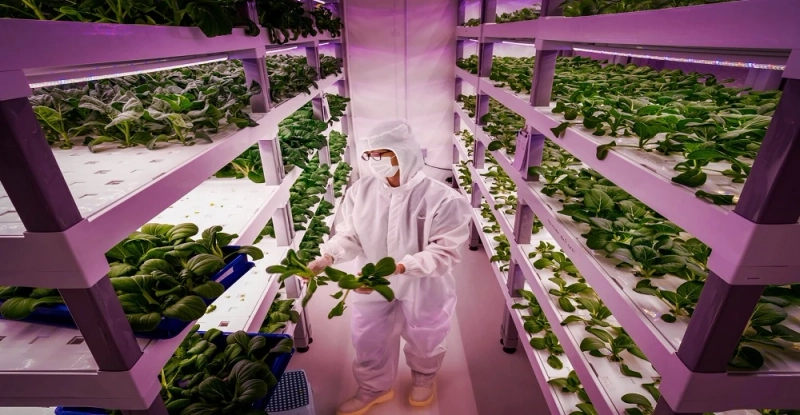Introduction:
In recent years, the agriculture industry has undergone a transformative shift, with traditional farming methods giving way to innovative technologies that promise increased efficiency, sustainability, and productivity. One such technological marvel that has gained significant traction is indoor farming. This method, often referred to as vertical farming or controlled environment agriculture (CEA), leverages advanced technologies to cultivate crops within enclosed spaces, free from the constraints of traditional soil-based farming.
The Indoor Farming Landscape:
The global indoor farming technology market is witnessing unprecedented growth, driven by a confluence of factors ranging from the rising global population and the increasing demand for food to the need for sustainable and resource-efficient farming practices.
Key Technologies Driving the Market:
Hydroponics:Hydroponics is a cornerstone technology in indoor farming, eliminating the need for soil by delivering essential nutrients directly to plant roots through a nutrient-rich water solution. This method not only conserves water but also allows for precise control over nutrient levels, optimizing plant growth and yield.
Vertical Farming:Vertical farming involves stacking layers of crops vertically, making the most of limited space. With the use of artificial lighting and climate control systems, vertical farms can operate year-round, independent of external weather conditions. This approach significantly increases crop yield per square meter, addressing the challenge of limited arable land.
Aquaponics:Aquaponics combines aquaculture (fish farming) and hydroponics in a symbiotic environment. Fish waste provides nutrients for plants, and in turn, the plants filter and purify the water for the fish. This closed-loop system enhances resource efficiency, as it requires less water compared to traditional farming methods.
LED Lighting:Light-emitting diode (LED) lighting has revolutionized indoor farming by providing a customizable light spectrum tailored to specific plant needs. LEDs not only consume less energy but also emit less heat, reducing the need for excessive cooling. This technology allows farmers to manipulate light conditions to optimize plant growth and accelerate crop cycles.
Market Drivers:
Increasing Population and Urbanization:As the global population continues to grow and urbanize, the demand for fresh, locally grown produce has surged. Indoor farming offers a sustainable solution to meet this demand by enabling year-round cultivation in urban environments, minimizing the environmental impact of transportation.
Climate Change and Unpredictable Weather Patterns:Climate change poses a threat to traditional agriculture, with unpredictable weather patterns, extreme temperatures, and water scarcity becoming more prevalent. Indoor farming, shielded from external environmental factors, provides a reliable and consistent supply of crops regardless of external climate conditions.
Resource Efficiency:Indoor farming reduces the need for vast expanses of arable land, conserves water through closed-loop systems, and minimizes the use of pesticides and herbicides. These resource-efficient practices align with the growing emphasis on sustainability and responsible agricultural practices.
Challenges and Opportunities:
While the indoor farming technology market shows tremendous promise, it is not without its challenges. High upfront costs, energy consumption, and the need for skilled personnel are some of the hurdles faced by farmers looking to adopt indoor farming practices. However, ongoing advancements in technology, increased investment, and supportive government policies present opportunities to overcome these challenges and drive further market growth.
Conclusion:
The indoor farming technology market is poised to revolutionize the way we grow and consume food. As the world grapples with the challenges of a growing population, climate change, and resource scarcity, indoor farming emerges as a beacon of hope, offering a sustainable, efficient, and resilient alternative to traditional agriculture. With continued innovation and investment, the indoor farming technology market is set to play a pivotal role in ensuring food security and environmental sustainability for future generations.


